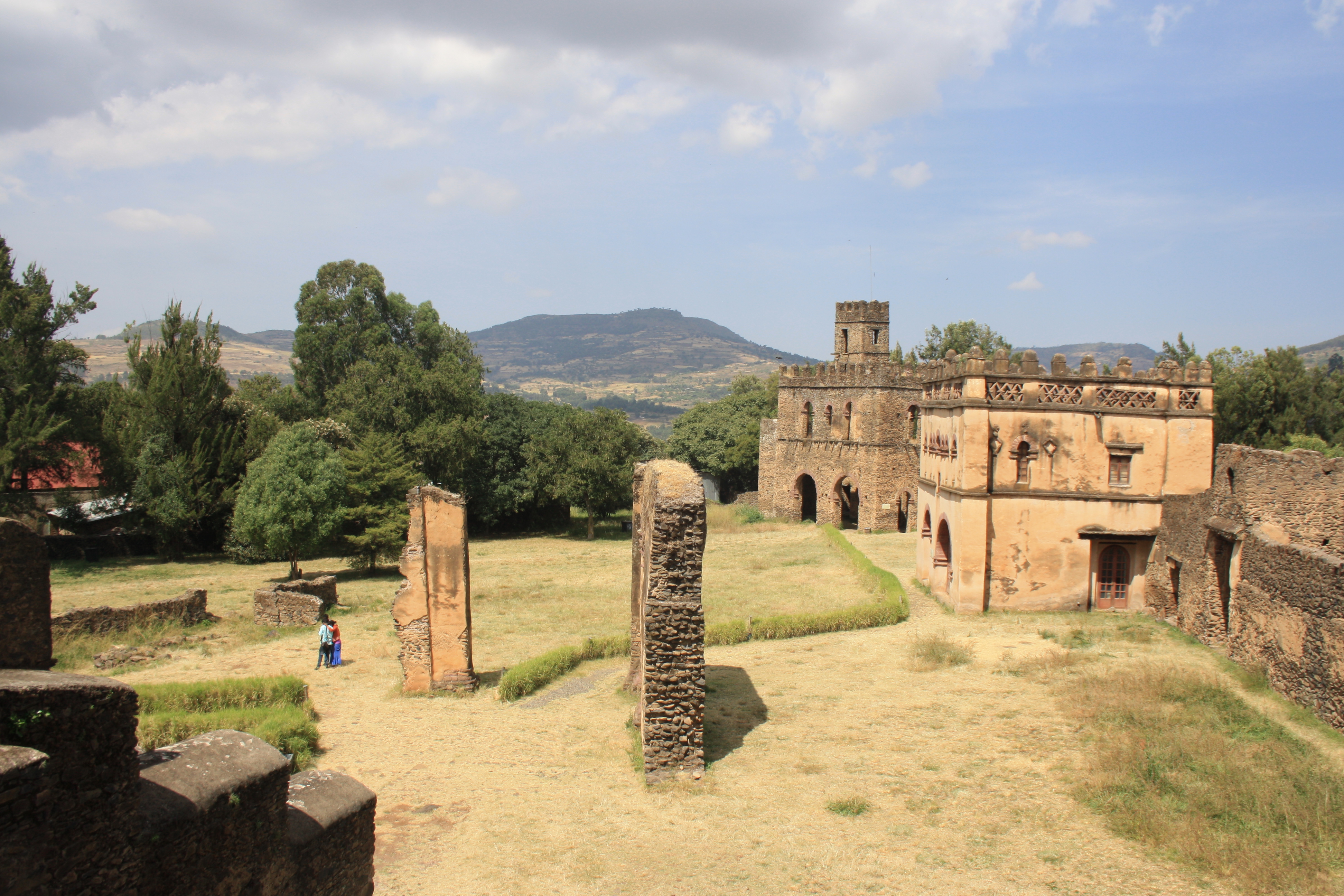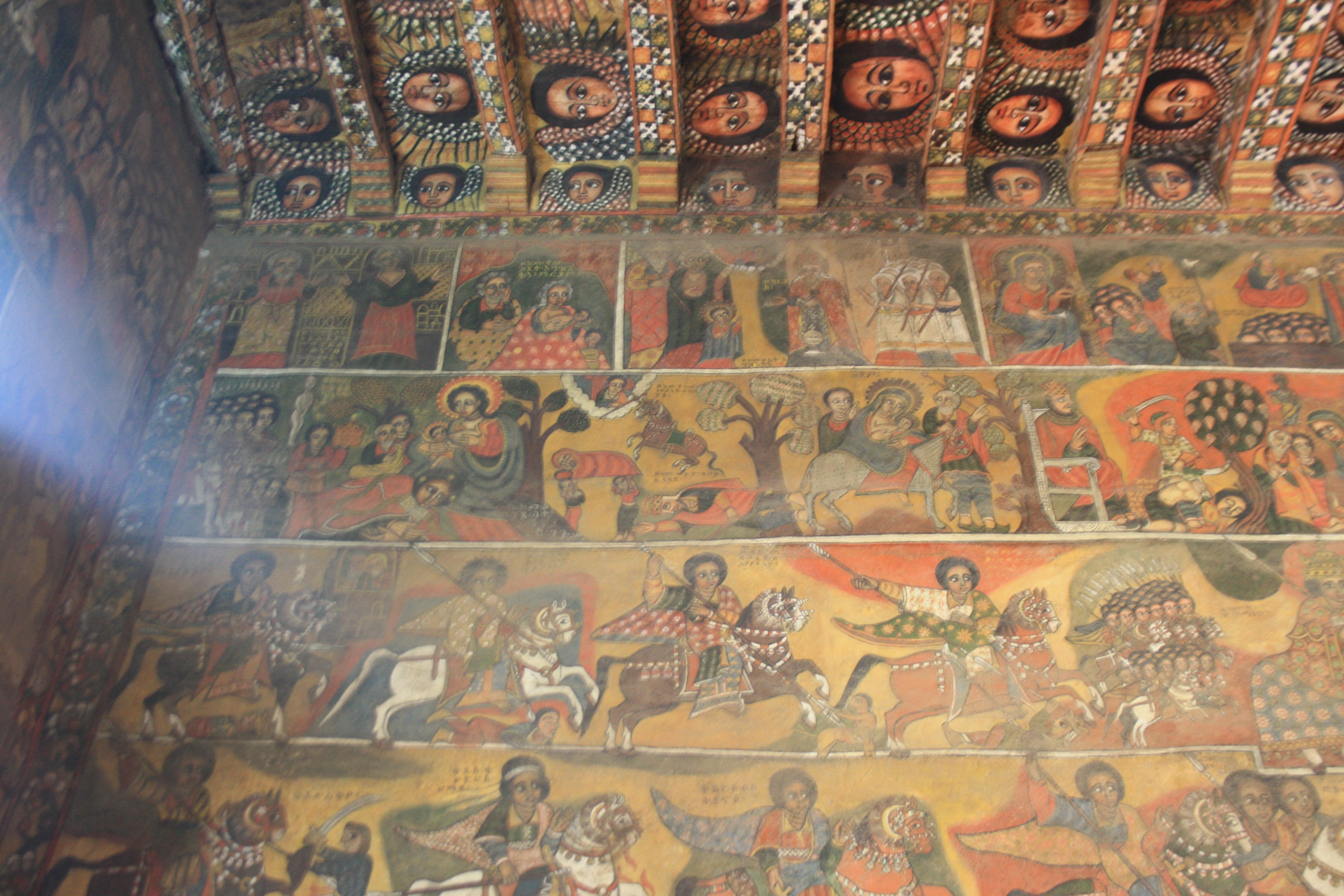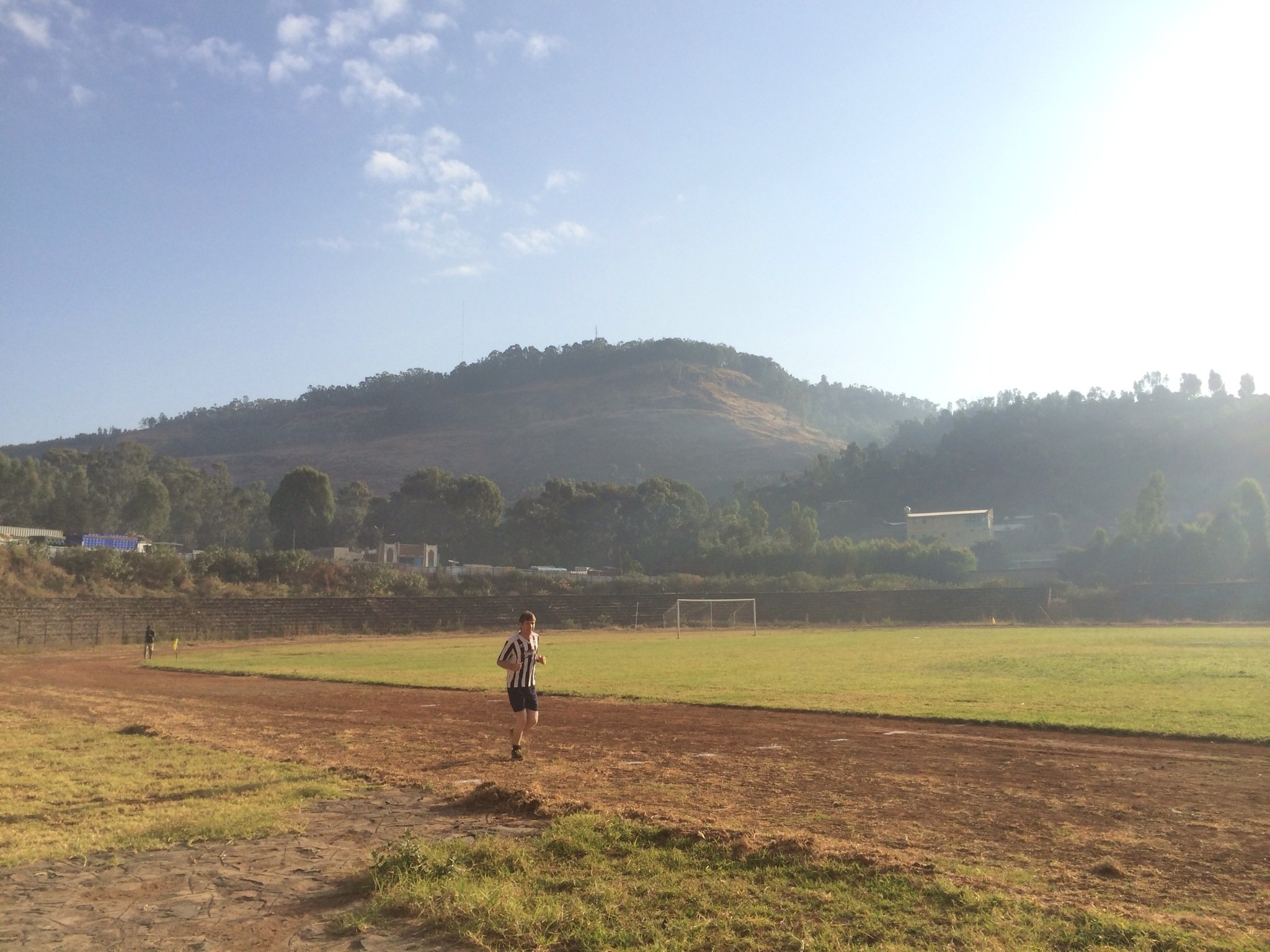Written by Rory & Hannah
It is a time-worn cliché that you never visit the famous sights of the place where you live, focussing instead on the day-to-day necessities of life and saving the money to visit famous sights in far-flung places. Of course we are in Ethiopia so this does not quite apply, but it did take us a few weeks to get around to seeing some of what Gondar has to offer to tourists. Inspired by previous volunteer Ben’s excellent blog, Addis in a Day, which we used to navigate Addis Ababa last month, we decided to compile some up-to-date information on Gondar for visitors and volunteers (the prices have increased considerably since the publication of the latest Lonely Planet).
Running at the Stadium
We started our day at an ungodly hour, tentatively stepping out of the Link Ethiopia compound in our running gear. The day was breaking and there was a slight chill in the air: the perfect time of day for a jog. Unfortunately, half of Gondar was also out on the streets going about their business; they were without exception heartily amused by the sight of four farenjis hurtling down the hill towards the stadium. We followed the Tarmac road as it snakes down around 1.5km, dodging sheep and chasms in the pavement as we went. Needless to say to those who know me, we did not run all the way and walked the last part into the football stadium opposite Fasiledes Secondary School and next to King Fasiledes bath house (more on him later).
The track is dirt but it is nice and flat and the surroundings are quiet and calm (at least not on a match day). We were joined by other running clubs and individuals putting us to shame but it did not dissuade us from our training for the Great Ethiopian Run next Sunday.
*Fundraising plug*… Please sponsor our team here.
Breakfast at New Day Café
This seemingly unremarkable café can be found by walking up past the main entrance to the Quara Hotel from Piassa, passing by the traditional nightclubs and the petrol station on your left and then when you see the Mega Book Store on your right, you should find it on your left. New Day was close to the previous Link office and therefore a favourite haunt of many a volunteer and we have discovered why. The makiato is top-notch and we also filled up on the typical Ethiopian breakfast foods, full (a spicy bean stew served with fresh bread) and fetira be mar (a thick pancake served with honey). Delicious!

Tour of the Royal Enclosure
Gondar’s town centre is dominated by the fortified walls of the castle complex (also called the Royal Enclosure). The walls serve to conceal the six castles built by a succession of kings in the seventeenth century who made Gondar their capital. Entry for tourists costs 200 Birr per person (just over £6 at the time of writing) and I would recommend a guide for the day, which will set you back 400 Birr, and can be arranged within the castle walls and will stay with you to guide you around all the day’s sights. We were impressed by the interior of Fasiledes castle (the only castle fully in tact), the display of traditional lime mortar being used to renovate Mentawab’s castle and by the tales of royal folly retold by our guide. If you were on a tight budget, you could forgo the guide, but the Lonely Planet (other guidebooks are available) would be indispensable because no information boards are provided.

Traditional lunch at Camelot House
Guided by our stomachs, we proceeded to Camelot House, which can be found in the old Italian Art Deco cinema on the left-hand side as you head back to Piassa from the castles. The interior is dark and traditionally Ethiopian with small tables and also grass strewn on the floor. Unanimously we decided to eat shiro, a stew containing chickpea flour and berbere, but the controversy came when deciding between tegabino (thick) shiro and feses (runnier) shiro (better than it sounds). So we ordered both and very tasty it was too.

King Fasiledes Bath
Next we decided to stroll back down the hill to our next sight. You can take a bajaj (price negotiable) but if you have eaten two types of shiro you might appreciate the walk (which was around 2km). The bath and its bath-house offer calm surroundings (we were the only tourists) and the tree roots growing over the sides of the bath are an incredible sight. I should mention that entry is included in the price of entry to the royal enclosure.

At Epiphany the bath comes alive as it is filled by river water (using an ingenious damming and pipe work system) and it becomes the site of a mass public ceremony. We are looking forward to witnessing this in January when we return from the UK (it is sure to warrant another blog post).

Debre Birhan Selassie Church
As we left the bath-house, a bajaj was ready and waiting to take us up to the church on the other side of town. We negotiated 40 birr for the four of us but I am sure you could get it cheaper with some hard haggling. It was a scenic drive around the hills of Gondar to the Debre Birhan Selassie (Trinity and Mountain of Light) church. Entry to the church costs 100 birr, which you pay at the kiosk opposite, and the beautiful wall paintings inside certainly make it worth this. Our group was momentarily separated as men and women are required to enter by different doors and all are asked to remove their shoes. Our guide was still with us and this was invaluable because he was able to tell us the story of the church and its paintings.

The day was drawing to a close and we were feeling tired but satisfied as we made our way down the hill back in to town. The options for dinner are too numerous to list but we settled on Coffee House for its proximity to our accommodation (just near Atse Bekafa School) and for its excellent and piping hot chips (we had had enough shiro for one day!).
